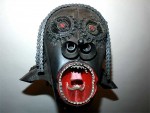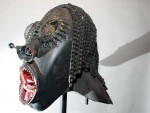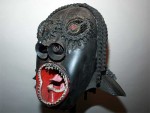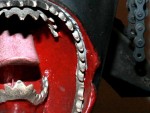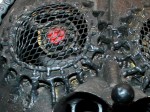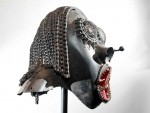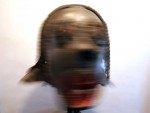 Increasingly, we see the term ‘Tribal’ applied to tattoos and other graphic designs that vaguely resemble genuine ethnic cultural symbols. That got me to wondering exactly what makes something ‘tribal’.
Increasingly, we see the term ‘Tribal’ applied to tattoos and other graphic designs that vaguely resemble genuine ethnic cultural symbols. That got me to wondering exactly what makes something ‘tribal’.
According to social anthropologist Alfred Gell, whose work focuses on the relationship between culture and art, authentic tribal art is the product of small-scale societies, especially isolated societies that lack a literary tradition. Arguably distinct from the multiple roles art plays in our modern culture, he notes that “the importance of tribal art lies in its utility as a magical technology…the decorations on an spear may help it find its target, or a carving’s importance derive from the fact that it is occasionally inhabited by a god or by the ghost of an ancestor.”
The word ‘tribe’ doesn’t seem to carry a definition precise enough to be of much help. Apparently, it’s no longer even used much as an anthropological term. ‘Nation’, ‘people’, or ‘band’ are all rough equivalents, depending on who applies the term, and when. Essentially, though, a tribe (or nation, etc.) is a smaller group within a larger group, and that shares something in common- kinship or territory or ethnicity or other factor. As a label, ‘tribal’ can describe almost any group, although ‘tribal art’ implies an ethnicity.
So, why do I care? Partly because I feel that truly ‘tribal’ objects deserve respect, and the trend of freely labeling everyday objects as tribal undermines that respect and clouds our understanding of this special class of thing.
More personally, when I’m making certain objects, I sense that the process somehow incorporates an intangible part of myself into the finished thing. Without getting silly about it, I feel that specific memories and past experiences become associated with the act of creating a given object. When I am lost in working, my mind typically focuses on something, some place, not of my conscious choosing. If I’m interrupted, and return to work the next week, my mind returns to that same place, as though there is unfinished work to be done there as well. Gell’s notion of an object’s importance deriving from an ancestor’s presence within it makes perfect sense to me.
I built this mask decades ago using nothing but motorcycle parts. (Some of which would be laughably valuable today!) It represents uncountable hours of staring into an oxy-acetylene flame. When I made this mask, I was recovering from a motorcycle accident that left me with some permanent damage. (See Haephestus). Without a doubt, a part of me, as I existed then, inhabits that mask. Now, it’s an like old friend; a friend with a dark side.
When I made this, I wasn’t thinking in terms of tribal or even art; it was just something I found myself doing. Several other pieces have survived from that era, but many have not.
The mask is wearable, although at forty pounds, not easily so. The weight is carried on shoulder pieces, and visibility is achieved through the eyes and mouth. It’s typically rests on a short stand for display, although a taller floor stand could be easily arranged.
Now, separated by time, I see this as authentic tribal art in its meaning and purpose. This is the magical technology of the tribe that existed then.
